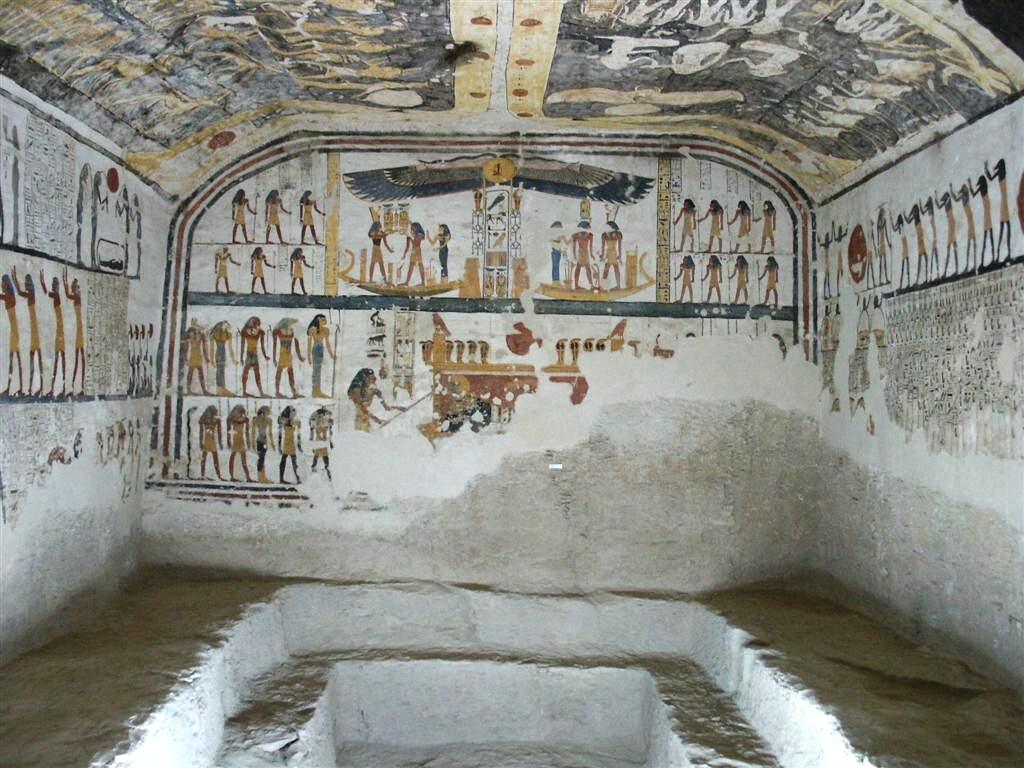Valley of the Kings

The downside about Pyramids as the final resting place of Pharaohs is that by their very nature they acted as beacons to tomb robbers. Hence after Pyramids went out of fashion, Pharaohs looked to more secretive places for burials. What better location than near to the religious centre of Thebes? And what must have decided it for this particular valley was the Pyramidal shape of the mountain al-Qurn dominating the skyline.
Apparently since 2009 all cameras are forbidden in the Valley of the Kings site, so I was lucky to get the photos that I did. (But see the note below.)
They are still excavating! Its surprising that despite modern technology, the only way of finding if there are any more burial tombs is just to keep on randomly digging.


There are over 60 known tombs in the Valley of the Kings. The way that the system works is that your entrance ticket allows entry into just three tombs. To preserve the tombs, they rotate which ones are open on a daily basis. The humidity caused by visitors’ breath is the main cause of damage to the decorations.
So our guide suggested which tombs to visit based on their decoration and length of the queues.
On our visit we saw the tombs of three Ramesses Pharaohs; the 1st, 9th and 4th.
As you can see on this signboard outside Ramesses 1st tomb, they are very deep. They are also very hot once you get to the burial chambers.

Burial Chamber of Ramesses IX
You are not supposed to take photos inside – presumably to encourage you to buy the books afterwards. However I saw little harm in taking some illicit photos (without flash!). The decorations are so vivid that you have to remind yourself that they are over 3,000 years old. I wonder how many of our Western works of Art will remain as fresh in 3,000 years time? Obviously the dry climate is the reason for their good preservation. The two-tiered pit in the floor of the burial chamber was to take the large sarcophagus.

The ceiling has the primeval sky Goddess, Nut, swallowing the sun at dusk ready for the following day’s rebirth in the form of a scarab. The image is duplicated as a mirror image. Paired images were popular in ancient Egyptian times. The Theban Mapping Project website is a superb resource to explore the Valley of the Kings.

The central, lower part of the wall on the right is from the “Book of the Earth” and apparently shows the personification of a water clock.


I was caught taking this photo of the ceiling of the entrance corridor and after a bit of “argy-bargy” had to pay baksheesh to the guard. Fair enough. But when outside another guard challenged me I had to get our tour guide to intervene. I wasn’t paying baksheesh to all & sundry!


Howard Carter’s House is in a prime position overlooking the entrance to the Valley of the Kings.
Return to the Theban Necropolis
